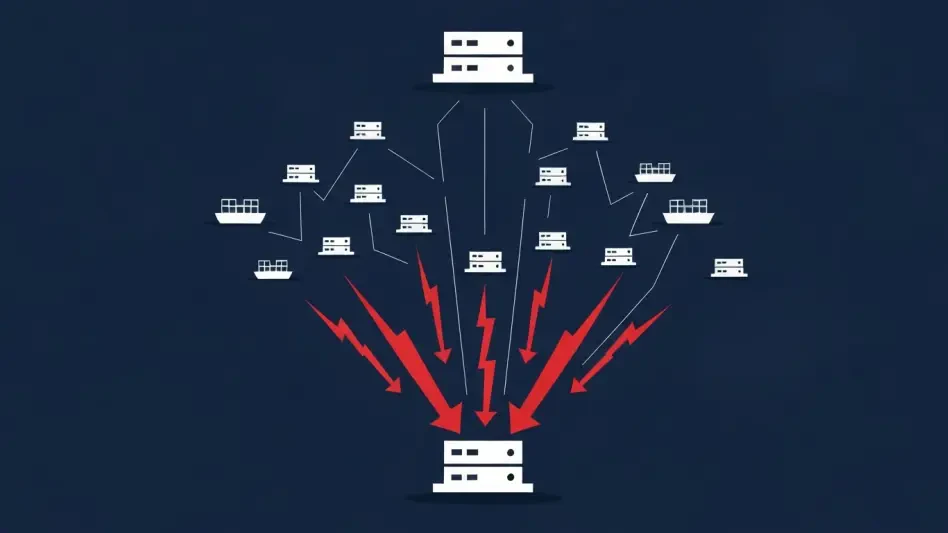In today’s rapidly evolving cybersecurity landscape, where threats grow more sophisticated by the day, organizations must rely on advanced tools to safeguard their digital assets from malicious actors seeking to exploit vulnerabilities, ensuring their defenses remain robust. The combination of Nessus, a leading vulnerability scanner, and Metasploit, a powerful exploitation framework, stands as a cornerstone for security professionals engaged in penetration testing and risk assessment. These tools, when used together, provide a comprehensive approach to identifying weaknesses and validating their exploitability in controlled environments, ensuring that potential attack vectors are addressed before they can be leveraged by adversaries. This synergy has become a standard for ethical hackers and security researchers aiming to strengthen organizational defenses against advanced persistent threats. Through a detailed exploration of their individual capabilities, integration methods, and real-world applications, this article aims to equip security teams with the knowledge to maximize the effectiveness of these platforms in vulnerability management and penetration testing operations. By understanding how to harness their combined power, organizations can gain critical insights into their security posture and prioritize remediation efforts with precision.
1. Understanding the Role of Advanced Tools in Cybersecurity
The pressing need for robust cybersecurity measures has never been more evident as cyber threats continue to target organizations of all sizes across industries. With attackers constantly developing new methods to exploit vulnerabilities, security professionals must stay ahead by employing tools that not only detect weaknesses but also simulate real-world attacks to test defenses. Nessus and Metasploit emerge as a dynamic duo in this context, offering complementary functionalities that cover the full spectrum of vulnerability assessment and exploitation. Nessus, developed by Tenable Network Security, specializes in identifying security gaps across a wide range of IT environments, while Metasploit, an open-source framework by Rapid7, focuses on validating these vulnerabilities through targeted exploitation. Together, they enable a proactive approach to security, allowing teams to uncover risks and demonstrate their potential impact before they result in breaches. This powerful combination is widely adopted by ethical hackers and security experts who aim to fortify systems against sophisticated attack vectors.
Beyond mere detection, the integration of these tools provides a deeper understanding of how vulnerabilities can be exploited in practice, which is essential for developing effective mitigation strategies. For instance, while automated scans can highlight a long list of potential issues, not all vulnerabilities pose the same level of risk. The ability to test exploitability in a controlled setting helps prioritize remediation efforts, focusing resources on the most critical threats. This synergy is particularly valuable in environments where regulatory compliance and risk management are paramount, as it offers concrete evidence of security posture. By leveraging both platforms, organizations can move beyond theoretical assessments to actionable insights, ensuring that their defenses are not only reactive but also anticipatory of emerging threats.
2. Deep Dive into Nessus: The Benchmark for Vulnerability Scanning
Nessus stands as the most widely deployed vulnerability assessment solution globally, trusted by over 30,000 organizations, including 65% of Fortune 500 companies. Its reputation is built on an extensive database of over 140,000 plugins that cover more than 50,000 common vulnerability exploits (CVEs), with over 100 new plugins released weekly to address emerging threats within 24 hours of disclosure. The platform excels in comprehensive network discovery, operating system fingerprinting, and service enumeration across diverse environments, including traditional IT assets, web applications, cloud infrastructures, IoT devices, and containerized systems. Both credentialed and unauthenticated scanning options provide deep visibility into system configurations and externally exploitable weaknesses, making it an indispensable tool for mapping an organization’s attack surface.
Recent advancements in Nessus further enhance its capabilities, with features like CVSSv4 and EPSS scoring for improved vulnerability prioritization, triggered agent scanning in Nessus Manager, and robust offline mode for air-gapped environments. Its six-sigma accuracy, with a false positive rate of just 0.32 defects per million scans, ensures that security teams can trust the results and focus on genuine threats. Additionally, Nessus supports multiple scanning methodologies, including network-based assessments, web application testing, and compliance audits against standards like PCI DSS and GDPR. The automatic asset discovery feature creates detailed inventories of network-connected devices, ensuring no system is overlooked during security evaluations, thus providing a solid foundation for risk management.
3. Exploring Metasploit: The Ultimate Penetration Testing Framework
Metasploit Framework is recognized as the world’s most sophisticated open-source penetration testing platform, developed by Rapid7 and continuously enhanced by a global community of security researchers. It boasts an arsenal of over 2,180 working exploits targeting vulnerabilities across Windows, Unix/Linux, and macOS systems, alongside 592 payload options for diverse attack scenarios. Its modular architecture, comprising exploit, payload, auxiliary, post-exploitation, and encoder modules, allows security professionals to craft customized attack vectors tailored to specific testing objectives. This flexibility enables testers to simulate real-world attack scenarios, from initial reconnaissance to full system compromise and lateral movement within network infrastructures.
One of Metasploit’s standout features is the Meterpreter payload, a powerful post-exploitation tool that operates entirely in memory, avoiding detection by not writing files to disk. It facilitates advanced activities like privilege escalation, credential harvesting, file system manipulation, and network pivoting. Recent updates have introduced modules for Active Directory exploitation and critical CVEs like CVE-2024-3400, alongside enhanced automation for large-scale assessments. The framework’s database integration also allows importing vulnerability scan results from various sources, creating centralized intelligence repositories for efficient analysis and prioritization of high-impact testing activities, making it a vital component of any penetration testing toolkit.
4. Synergizing Nessus and Metasploit for Enhanced Security Assessments
The integration of Nessus with Metasploit creates a streamlined vulnerability discovery and exploitation pipeline that significantly boosts the efficiency of security assessments. Nessus provides broad coverage for identifying potential attack vectors through its accurate scanning capabilities, while Metasploit offers precise tools for validating these vulnerabilities through exploitation and post-compromise simulation. This complementary relationship ensures that security teams can move from identifying risks to understanding their real-world implications, thereby enhancing the overall effectiveness of their testing processes. The workflow typically starts with Nessus scans to catalog vulnerabilities, followed by targeted exploitation using Metasploit’s extensive database of exploits.
Several methods facilitate this integration, including direct API connectivity within the Metasploit console, manual import of Nessus reports in .nbe or .nessus formats, and automated scripting to synchronize data between platforms. The Nessus Bridge plugin further simplifies the process by enabling real-time connectivity, allowing penetration testers to initiate scans directly from Metasploit and import results for immediate analysis. This seamless collaboration reduces manual effort and accelerates the identification of viable attack paths, ensuring that security assessments are both thorough and time-efficient. Such integration is particularly beneficial in complex environments where rapid response to vulnerabilities is critical for maintaining robust defenses.
5. Step-by-Step Guide for Nessus-Metasploit Integration
Implementing an effective workflow between Nessus and Metasploit begins with conducting network reconnaissance using Nessus’s asset identification features to detect active hosts, open ports, and services within the target network. This initial step ensures a comprehensive mapping of the environment, identifying all potential points of entry that could be exploited. Following this discovery phase, detailed vulnerability analysis is performed through in-depth scans to uncover security flaws, misconfigurations, and unpatched software issues across the identified assets. Utilizing credentialed scanning further enhances visibility into system settings, software versions, and local policies that may not be apparent through external scans, providing a more complete picture of the security landscape.
Once scanning is complete, the results are exported in compatible file formats and imported into Metasploit using the db_import command, populating the framework’s database with detailed vulnerability intelligence, including CVE identifiers and impact assessments. This data enables automated correlation between discovered vulnerabilities and relevant Metasploit exploit modules, significantly reducing the time needed to pinpoint viable attack paths. By following this structured approach, security teams can efficiently transition from vulnerability detection to exploitation testing, ensuring that critical weaknesses are addressed promptly and effectively through a well-coordinated process.
6. Analyzing Strengths and Limitations of Both Tools
Nessus shines in its unparalleled ability to detect vulnerabilities with vast CVE coverage, high-accuracy scanning, and an extensive plugin library that spans diverse technology platforms. Its automated scanning capabilities allow for rapid assessment of large network environments, while detailed reporting features provide comprehensive documentation for compliance and remediation planning. This makes it an ideal choice for organizations seeking to maintain a clear and accurate understanding of their security posture across multiple assets, ensuring that no vulnerability goes unnoticed during assessments. The platform’s user-friendly design also supports teams with varying levels of expertise, facilitating quick deployment and actionable insights.
In contrast, Metasploit’s primary strength lies in exploitation validation and post-compromise simulation, offering security teams the ability to demonstrate real-world attack impacts and business risk exposure through its extensive exploit database and advanced payload options. However, it demands significant technical expertise for effective use and may not identify vulnerabilities lacking corresponding exploit modules. While Nessus focuses on breadth and accuracy in detection, Metasploit excels in depth and realism during exploitation, though its complexity can pose a challenge for less experienced users. Together, their strengths complement each other, though their limitations highlight the importance of skilled practitioners to maximize their potential.
7. Comparing Performance and Usability Across Platforms
From a performance standpoint, Nessus demonstrates exceptional speed and accuracy, with an optimized scan engine capable of assessing thousands of network assets simultaneously while maintaining a minimal false positive rate. Its user-friendly web interface, coupled with extensive policy templates, allows for rapid deployment and configuration, making it accessible to security professionals across skill levels. Additionally, the platform’s reporting capabilities cater to both executive-level summaries and detailed technical findings, supporting strategic decision-making and tactical remediation efforts with clarity and precision, which is crucial for effective vulnerability management in large organizations.
Metasploit, on the other hand, requires more specialized knowledge but offers unmatched flexibility for advanced penetration testing scenarios and security research. Its command-line interface and modular architecture enable experienced professionals to create custom attack scenarios and develop novel exploitation techniques that automated scanners cannot replicate. While this complexity may intimidate novice users, it provides expert practitioners with the tools necessary to simulate sophisticated threat actors and advanced attack methodologies. The distinct usability profiles of both tools underscore the need for tailored training to ensure that security teams can leverage their full capabilities without being hindered by steep learning curves or technical barriers.
8. Real-World Applications and Practical Exploitation Scenarios
The practical application of Nessus and Metasploit integration proves invaluable in real-world penetration testing engagements, offering tangible insights into potential security risks. For example, consider a scenario where Nessus identifies an unpatched Windows system vulnerable to MS17-010, also known as EternalBlue, a flaw notoriously exploited by WannaCry ransomware. Using this intelligence, security professionals can configure the corresponding Metasploit exploit module, establish reverse TCP payloads, and demonstrate complete system compromise within minutes of vulnerability discovery. Such simulations provide concrete evidence of risk, helping organizations understand the urgency of patching critical vulnerabilities.
In more complex scenarios, Nessus can detect web application flaws, database misconfigurations, and network service weaknesses across interconnected systems, enabling security teams to orchestrate multi-stage attacks with Metasploit’s pivoting capabilities. These simulations involve lateral movement through compromised networks while maintaining persistence and avoiding detection, mirroring the tactics of advanced persistent threats. By showcasing the potential impact of such attacks, organizations gain a clearer picture of their security gaps, supporting informed decisions on strategic investments and remediation priorities. These real-world exercises bridge the gap between theoretical vulnerabilities and actionable security improvements.
9. Emerging Trends and Future Outlook in Vulnerability Management
The vulnerability scanning market is experiencing significant growth, with projections estimating a valuation of $11 billion by 2032, driven by escalating cyber threats and stringent regulatory compliance requirements. Cloud-based solutions are leading this expansion, with 64% of organizations favoring these platforms for their scalability and reduced infrastructure demands. This trend aligns with broader digital transformation initiatives and the rising adoption of DevSecOps practices, where security is integrated into development processes. Additionally, the incorporation of artificial intelligence into vulnerability management tools is revolutionizing the field, with AI-enhanced platforms expected to reach $10.5 billion by 2034, offering improved threat detection and prioritization through machine learning algorithms.
Furthermore, the growing emphasis on Zero Trust Architecture is fueling demand for continuous vulnerability assessment and validation capabilities, ensuring real-time monitoring of security posture across distributed environments. Nessus and Metasploit support these implementations by providing ongoing verification of security controls. Similarly, DevSecOps integration is becoming standard, with vulnerability scanning and penetration testing embedded into CI/CD pipelines to address issues during development rather than post-deployment. The automation features of both tools, including API connectivity, facilitate this shift-left approach, reducing remediation costs and enhancing overall security resilience in an increasingly complex threat landscape.
10. Reflecting on a Powerful Alliance for Robust Security
Looking back, the integration of Nessus and Metasploit proved to be a game-changer for countless organizations striving to fortify their cybersecurity defenses against relentless threats. This combination delivered unmatched visibility into security postures, allowing teams to move beyond mere identification of vulnerabilities to understanding their practical exploitability and potential business impact. Security professionals who mastered both platforms gained a strategic edge, achieving better resource allocation and enhanced compliance with regulatory standards through meticulous testing and documentation.
As a forward-looking step, security teams are encouraged to invest in continuous learning and specialized training to stay abreast of emerging vulnerabilities and exploitation techniques. Prioritizing ethical testing practices remains critical, ensuring that assessments are conducted responsibly while maximizing the value of these tools. The evolving nature of cyber threats underscores the lasting importance of this alliance, positioning it as a vital component of comprehensive risk management programs across industries. Organizations that embrace this methodology are better equipped to navigate future challenges, maintaining robust defenses in an ever-shifting digital environment.








